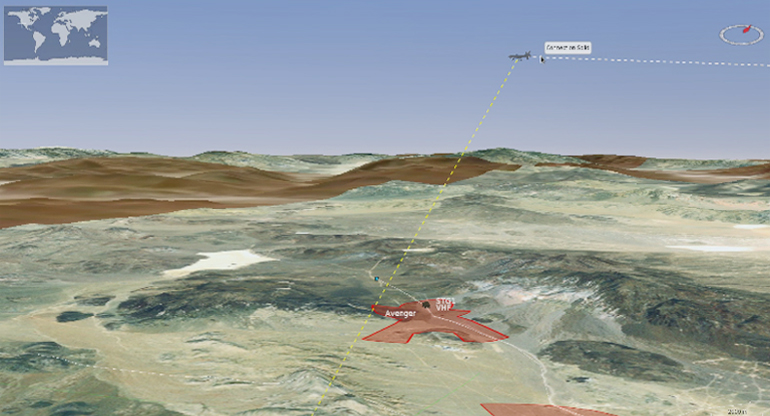Space wargaming tool provides real-time battlefield analysis
If you’ve watched enough football games, it can be easy to see why a play goes well or poorly. Momentum-shifting plays don’t just happen; there’s planning on the offense and the defense that may change right up until the ball is snapped.
When our warfighters go into battle, they make and revise strategies similarly, except they aren’t protecting footballs or quarterbacks. They’re often protecting our national security, which is why they need more than a 30-second huddle to make sure they’re prepared to defend against whatever the enemy brings their way. Our warfighters need a tool that supports the development of multi-domain scenarios to provide situational understanding of the potential impacts of strategic and tactical decisions.
Simulating the battlefield
Enter the Space Wargaming Analysis Tool (SWAT), a rapidly deployable quick-scenario generation and execution tool that enables high-level analysis of single or multiple platforms supporting the armed forces in a wargaming environment. The U.S. Army Space and Missile Defense Command is developing and deploying SWAT to gain a real-time understanding of the effects of its actions against an adversary. The GOTS tool will be available to all DOD organizations wanting to utilize a space wargaming environment.
SWAT’s primary function is to generate red-team versus blue-team war games, where two sides battle each other virtually with scripted or dynamically injected interactions and the effects of those actions play out against each other. SWAT is unique in that it enables the dynamic deployment of battle assets — divisions, brigades, battalions, companies, platoons, and fire teams — in real time or faster than real time, providing further insight into potential scenarios. These scenarios can include uncommon events, such as degradation or jamming of communications, which force users to adjust strategies on the fly.
SWAT imports satellite flight paths and satellite constellations so that all domains, including space, are included in the wargaming analysis.
“A comprehensive understanding of all outcomes requires a comprehensive input of scenarios, and SWAT achieves just that,” said Sam Saiz, SAIC senior systems engineer for the SWAT program.
Multiplatform deployment
The program is accessible on a laptop, but the SWAT team is working to condense its operability to a tablet to make it even easier to use.
“Because this is such a new tool, there are so many opportunities to shape it to the customer's need,” Saiz said. “We want SWAT to answer basic situational questions before going into battle.”
TV shows and movies set in medieval times often depict military leaders planning for battle while hunched over a board dotted with multi-colored markers or tokens. SWAT mimics this planning, but instead of King Arthur using a big sand table, users get a bird’s-eye view on their laptops and in augmented reality (AR). By using AR headsets and peripherals, they see a virtual sand table that enables easy collaboration and communication.
“It brings the battle into your world before you even have to fight,” Saiz said.
The user interfaces in both AR and desktop views are based on NASA's Worldwind Map Engine data. This is an open-source virtual globe that allows developers to quickly create interactive and accurate visualizations of the Earth. The user interface helps the warfighter understand their area of interest.
Future developments for SWAT
The SWAT team is researching new capabilities to add to the program, not only for its current customer, but for future customers as well.
In addition to enhancing mobility, the team is incorporating inclement weather, reconnaissance, navigation, and other variables and scenarios that soldiers may encounter.
The modern warfighter needs as much information as possible before engaging with adversarial forces. SWAT quickly provides planners with that awareness. When a quarterback drops back to pass, he wants that pass to hit the receiver every time. With SWAT, SAIC helps make sure our troops are ready to complete their mission-critical plays whenever they’re on the field of battle.

